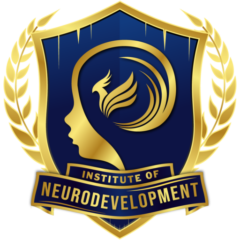Society Awareness Program

The goal of social awareness is to increase the community's knowledge of the available programs and services offered. This is achieved by informing the general public through various activities.
Participate in at least 24 community awareness activities
The activity aims to attract a poorly serviced community and diverse people in our county. Twenty-four community awareness activities focus on all programs and services unless asked to talk about individual programs
- Community networking promotes community awareness of program services and availability through networking with community experts and leaders.
- Developing, building and maintaining Response Teams, which include representatives from victim advocacy, law enforcement, prosecution and healthcare.
- Joining community-based collaborations (e.g., disaster preparedness committees, social service consortiums,)
- Communicating regularly with staff at local social service agencies, hospital emergency room, law enforcement, state attorney, clerk of court and non-certified victim advocates
- Joining local groups and sharing information
- Collaboration with other agencies
Training for Professionals and Non-Professionals
“Training” refers to education about available programs/services that are provided to professional and non-professional audiences. Trainers must be competent in the following content areas:
- Dynamics of each of our programs and all services that we offer
- Relevant community resources
- Crisis interventions
- Medical, criminal justice/legal and social service victim response
Training Sites Include:
- Social service agencies and organizations
- Educational institutions, including daycare centers
- Healthcare facilities
- Law enforcement agencies
- Youth organizations
- Legal
- Clubs
- Local businesses (e.g., provide ASD training to employees)
- Churches (e.g., provide ASD training to congregations and/or religious leaders)


Participation in Community Events
Program staff are involved in events throughout the community. Participation in community events often includes a table with promotional and informational items containing (at minimum) program names and hotline number, program materials and program brochures. Examples of community events:
- Festival
- Measurement
- Community celebration
- parade
- Social welfare (business days)
- School events (sports events or campus clubs / activities>
- Autism Awareness Month Activities
- Speak in public
This announcement raises community awareness of the program and available services. Things to remember when speaking publicly:
Run an Agency Speaking Bureau – The list should include trained core advocacy staff, volunteers with public speaking experience, disciplines, and general availability.
Promote the willingness to talk about ASD
Call a potential speech sponsor
Find opportunities to talk at local events
Set up interviews for local TV and radio shows
Submit a meeting workshop proposal
Distribution of materials
The program should regularly distribute program materials to local businesses, churches, social services, hospitals, law enforcement agencies, courts and legal staff, clubs, schools and civil society organizations. Considerations:
The documentation should contain information about all available programs and the predefined programs that are most suitable for your visit. Include hotline and office phone numbers, business hours and service locations, and website addresses in the documentation. You need to introduce a mechanism to notify the community of distributable materials and request them.
Submission of materials to local companies (eg hotline tear-off sheets, event leaflets, program pamphlets)
Media coverage / campaign
The media provides a cost-effective means of advertising.
- Plan events to include media coverage. Use local media that reaches diverse populations within your service area; for example: rural, African American, Latina, migrant, LGBTQ or the elderly.
- Invite minority owned news outlets (newspaper, radio, television) to cover your events.
- Include coverage in language(s) that will reach all members of your community.
- Public Service Announcements on local television and radio stations.
- Local media/newspapers – invite the news to cover program events such as Autism Awareness Month activities or fundraisers.
- Social media – spread the news of your services through an agency Facebook page and/or Twitter account to keep professionals in your community up-to-date and informed on issues related to your program and autism.
- Agency website and blogs
Advertising
Advertising program services and the hotline number should be included in agency advertising and materials as well as ways to inform hard-to-reach populations such as the mentally ill, homeless, substance abusers and sex workers of the available programs and services. Examples of advertising opportunities:
- Posted on the website of Collier County Sheriff’s Office
- Published in Collier County Elders Pamphlet
- Membership organizations (eg local newsletters for the elderly, LGBTQ, minorities)
- Newspaper advertisement
- TV or radio ads or PSA
